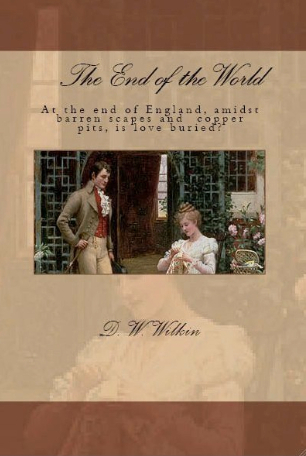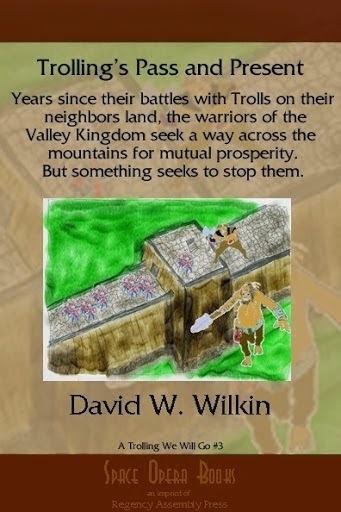D.W. Wilkin's Blog, page 143
March 30, 2015
Beaux, Ballrooms, and Battles -Christa Paige
Today we have an author interview from my latest work, Beaux Ballrooms and Battles anthology.
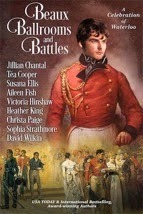
It will be available digitally for $.99 and then after a short period of time sell for the regular price of $4.99
The Trade Paperback version will sell for $12.99
My story in the anthology is entitled: Not a Close Run Thing at All, which of course is a play on the famous misquote attributed to Arthur Wellesley, ���a damn close-run thing��� which really was ���It has been a damned nice thing ��� the nearest run thing you ever saw in your life.���
Today we are fortunate to have with us Christa Paige who writes in contemporary, paranormal romance and Regency genres. Though we want to hear of her historical work in the Regency.
1)What moved you to become an author?
I wrote my first story while I was in middle school. It was awful. It was my first romance and it was based during the civil war with a Scarlett O���Hara caricature, a Tale of Two Cities twist and so many clich��s. My next attempt came during the height of the Lord of the Rings movies where I dabbled in fan fiction land and met some amazing writers. From there I stepped back from creating stories and embarked upon beta-reading. Soon, many of those in the fanfic community realized that they could write their own stories and I was asked to critique drafts as they were being readied for submissions. One day a good author friend suggested I write my own story and submit it. With my family supporting me and my friends encouraging me, I did just that. I was quite lucky to be offered a contract on my very first submission. Of course, that just whet my appetite and I was soon writing another story and another.
2)How did you find out about the Waterloo project?
I believe I was on set with my daughter when I saw the post online. I thought it sounded really cool. Many of the authors who were going to be involved had been in an anthology with me for a Regency-themed Christmas series. I couldn���t commit to the writing though. I didn���t think I would be able to participate but around December I had some free time, so I took advantage of those minutes and wrote One Last Kiss.
3)Can you tell us some of the things that attracted you to writing a piece on the anniversary of this famous battle
About the only thing I knew regarding Waterloo was that it was France against the allies and Wellington was in charge. So, I thought it would be interesting to learn more. My co-author in the Regency series I write is Vivien Jackson and she dubbed me the ���Queen of Research,��� because I get lost in the delightful journey of fact-finding and obscure information. Waterloo had amazing amounts of detail, people, places, equipment and I found myself excited to learn as much as I could about the war and those involved with it.
4)Tell us about your current story in the anthology.
Colin Scoville is a lieutenant colonel under the command of Colonel De Lancey. They are in charge of setting up the militia in their various positions on the battlefield. When the reports came in that the French had won a key position in Ligny, Colin must hie to the battle and attend to his duties.
Beatrice Ainsley is a young lady who has had the misfortune of becoming a ward to her uncle who is an aristocrat. They are in Brussels mainly due to Beatrice���s cousin���s commission in Wellington���s militia. He serves under Colin. Beatrice has always found Colin to be striking and a bit unsettling to her nerves. They have a moment before the war that changes everything between them. During Waterloo they are both hoping for the exact same thing: To be reunited and to never be parted again.
5)How did the story begin to develop in your mind?
I had a completely different story ���written��� in my mind. It involved a field marshal who is attached to Wellington and is a go-between rushing hither and yon on the battlefield.
Then, I had another story that took over and that included the heroine overhearing some details of the French attack and her need to share that information.
I scrapped both ideas because I couldn���t find a romantic thread in there that I felt wouldn���t be contrived.
About the same time, many of the authors in the anthology began talking about their stories and how they would be going to the ball. Of course I had to research this ball. And, like usual, I decided I wanted to write something different. ���We are not going to the ball,��� I told my muse. ���We aren���t going to the battle, either,��� I added, firmly. No balls, no battles. (Alas, do you see that title? Beaux, Ballrooms and Battles���.) I started researching again and came across something I felt would be awesome fun to write: An impromptu cricket match. Apparently, some of the soldiers decided to play cricket at a lovely park in Brussels the day of the Duchess of Richmond���s ball. Well, I like being unique. So, cricket it was. From there, the story unfolded and my characters came to life. I did include the battle in the story because it felt���right.
6)What did you find most challenging about this story?
Uniforms. Battle maps. War terminology. I write romance novels. I like love stories and cravats and propriety. I researched the battle for days and days. I shared maps with my army veteran husband and had him explain things to me. I watched documentaries and Sharpe���s Waterloo (more for entertainment than actual history). I looked up re-enactments and digital video portrayals. When I finally had a grasp of what went down in that gory battle I still got tripped up on the uniforms. However, I did feel a bit chuffed when I went to the Evening with Jane event this past January and saw a man wearing a green uniform. I said to him, ���You���re one of the Prince Regent���s Own, a sharp-shooter from the rifle-brigade.��� He was very impressed with me and I was impressed with myself. I had learned a bit about uniforms, at least enough to write the battle scenes I needed in the story.
7)Tell us a little about yourself?
I���m a SoCal native and I grew up in Orange County. When I am not writing, I teach a college course for a local university. I���m the mom of two teenage girls who attend the school for the arts. Sometimes, I end up on set with my youngest while she films movies and commercials. I usually get to sit there and be quiet while enjoying tasty craft services. Other times, my oldest and I go thrift store hunting so she can upcycle vintage finds. Though I have a physical disability I am a runner. My husband is a runner, too, and he coaches me. I don���t run fast. I can���t do it all the time. But, it has given me such joy at reaching milestones. I like getting medals for my accomplishments even if there is a great deal of pushing myself to the finish line. I get to run with my mom, too, and those moments are ones I will cherish forever. I love beagles and have two little furry companions with me all day long. Yep, they are also a reason for the running. Cute they may be but they are also into everything and need their energy depleted so I can write in peace. I love Lord of the Rings, Star Wars and all things Jane Austen. Oh, and I���m a proud Vampire Diaries Delena shipper, but we can keep that on the down-low!
8)What is your next work, and beyond that, what do you want to work on.
For Regency era stories, I believe that Vivien and I are planning to write a third story based on the Avery family from our Christmas series. I have been considering a follow-up story to One Last Kiss featuring Beatrice���s cousin, Geoffrey. For my paranormal series, I have two novels in the works and I hope to have those in to my publisher soon. For those who have read this series, the stories are about Gunnar and Sevastian while continuing with the Komar family and the current threats they���ve been facing. I put the Kissin��� Cops series on the backburner for the time being but plan to do a complete reboot on two WIPs come summer. For those who follow that series, one story is about Maxwell the scarred SEB deputy from Star Spangled Kiss.
9)In the Waterloo Shorty Story, is there an excerpt to share? Your favorite scene, a part of your life that you put into the work and think it came out exceptionally well that you would like to share.
The part I really am proud of I don���t want to share here because I want to keep it as a surprise for the reader. But, I really did enjoy writing the scene before Colin and Geoffrey leave for Waterloo:
Colin didn���t know what to expect when he���d arrived at Lord Geoffrey���s residence. Certainly, he hadn���t imagined Beatrice meeting them in the foyer, dressed in nothing but her nightrail and a woolen robe. For a moment, he forgot himself, forgot the devastating state of affairs dragging him from the ball and into the fray. For that moment, he only could think of the beautiful young woman standing there with emotion sparking in her eyes and a firm resolve to remain brave in the face of such trying conditions.
And when he had touched her, taken her hand in his, a thrill surged low within his belly. She���d held on to his fingers, tightly, as if he alone was her anchor in this violent storm. For the first time in his life, he allowed himself to think of the possibilities of having a woman to return home to. A woman who challenged him, surprised him, and roused the fire of need in his veins. Beatrice Ainsley would be that woman.
In any other time and place where war wasn���t upon them, he���d ask to court her and let the matrons titter and gossip all they like. Yes, Beatrice didn���t have a grand title or a vast inheritance to add to his fortune, but she had something more. Compassion. Her emotions were vivid and obvious, playing on her features with little dissembling. The halo of fiery red hair held an allure like no other and in his darkest fantasies, he imagined sliding his fingers into the riotous mess and sifting through the silken tresses. Now, fantasy would have to suffice. But, he assured himself, if he made it through the skirmishes, the canon fire, the artillery and the Imperial soldiers who���d like nothing more than to stick their blade through his heart, he���d find Beatrice and convince her to let him woo her into his arms forevermore.
���It���s polished, sharpened to regimental specification.��� Geoffrey���s tone, devoid of his usual charm, had flattened to a guttural intonation.
Colin turned to his soldier ��� his friend, and saw the stark fear in his wild stare. Geoffrey held the blade of his bayonet to the muzzle of his rifle, fitting it into position. After a quick inspection, he dismantled the gun, setting it aside.
���It will serve you well in battle,��� Colin tried to reassure. He clasped his hands behind his back and added, ���If you are prevailed upon to use it.���
Flashes of former battles raced in his thoughts. How he���d managed to survive the death toll in the peninsula always surprised him. The casualties, many from his own regiment, weighed heavily on his mind. He recalled their faces, youthful and exuberant, when they had arrived in Spain eager for a triumphant victory. Within days, the gruesome tableau struck great fright into their bravado. Soon, as the death toll increased, friend and foe dying in the blood-soaked mire, canon fire thundering all around them, Colin relied upon the training each of them had received. Calling his soldiers to muster on his orders prodded them from their terror. They had won their skirmish, taking hold of a prominent fort needed to secure the allies��� position. Colin had received commendations and medals for his conquest. No matter the awards or the promotions he garnered, those extinguished lives scarred his soul. At the present, he faced more losses. He was utterly unprepared. But who could be prepared for such times?
Obviously, good ole Boney. More than prepared, at the very least.
���We must take our leave, Geoffrey.��� Colin tucked his thumb into the white sash bisecting his torso lest he be caught fidgeting or other such nervous behavior.
���There, I���m set.��� Geoffrey turned the clasp on his portmanteau and slipped on his oiled duster coat. ���Bollocks, I do believe it will rain soon.���
Colin blew out a breath; he observed the same of the weather. The air was thick, damp and the clouds rolled in heavy and black. This would only make fighting even harder with the mud sapping energy. Visibility for aiming the artillery would greatly diminish. ���Yes, bollocks indeed.��� He tried for levity but it fell flat.
Metal against metal hummed when Geoffrey slid his sword into the scabbard and secured it at his belt. He looked the soldier true, with his supplies bound on his back and his weapons at the ready. Once they departed, Colin must stop at his apartments and dress for battle, as well. And then, he���d ride to war.
���My lord, shall we see to your horse?��� The butler asked and even his stolid composure had been shaken. The usual timbre of his well-modulated voice quavered with a hint of emotion.
���Aye.��� Spurred to action, Geoffrey rattled off instructions for his gelding. His attentions now focused on his duties rather than his fears. Colin hoped his friend remained purposeful and managed to keep his head about him when the bedlam arose.
A tingle at the back of his neck put him on his guard as he felt Beatrice���s return before seeing her arrive. It was a curious distinction, a warmth and a scent of rose petals, or simply he���d developed an awareness of her that drew him to notice her even when unseen. It had been the same this afternoon at the park when he���d sworn there were eyes on him, watching him closely. Intuitively, he had the decided opinion those eyes belonged to none other than Beatrice Ainsley. What pretty, fine, eyes they were. Before he took his leave, he vowed to look into those brown, wide eyes and memorize the beauty within.
10)Who do you think influenced your writing, this work, and who do you think you write like:
Jane Austen definitely influenced my writing of the Regency era. I fell head over heels for Elizabeth and Darcy in Pride and Prejudice. Then, I fell even harder for Edmund and Fanny in Mansfield Park. Mary Balogh���s Slightly Series was also a great influence that my writing partner in crime Vivien Jackson introduced me to. We devoured each new release and discussed every little facet until I was doubly excited to write my very own Regency stories.
I would love to say I write like Miss Austen herself but that would be wishful thinking, indeed. Perhaps I write in a mash-up of all the Regency authors that I read way back when I started scribbling Regency romances. There would be Stephanie Laurens and Mary Balogh, Celeste Bradley and Julia Quinn and so many others that I would love to emulate. I think my mom really influenced me to write One Last Kiss, she gave me so much support and happily cheered me on as I got closer to writing those two powerful words: The End.
11)Who do you read? What are the things that a reader can identify with that you have grounded yourself in.
I have a huge TBR list. My kindle is bursting at the seams. I enjoy Regencies by Carolyn Jewel and Tessa Dare. I like paranormal stories by Mina Carter and Lara Adrian. But, the three books I am currently reading are The Complete Guide on Knitting for Beginners by Kathy Wilston, Lara Adrian���s Merciless and Carolyn Jewel���s Lord Ruin.
I ground myself in my family and my religion. I am a runner in order to keep my body healthy and to keep my mind sane. I like sarcasm and humor. I cherish friendships and love to cook.
12)When writing, what is your routine?
My life is fairly routine but my writing is not. It comes in fits and starts. It stalls. I fight my condition and unexpected changes in my schedule. I usually write what���s in my head and when there isn���t anything else in there, my writing slows down. I should probably be a whole lot more disciplined.
13)Do you think of yourself as an artist, or as a craftsman, a blend of both?
I don���t think of myself as either. I feel like I am lucky to tell stories and share them with readers.
14) Where should we look for your work.
My work is available at all online booksellers and at my publishers��� sites.
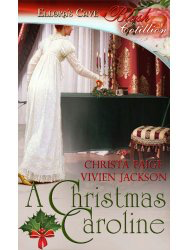
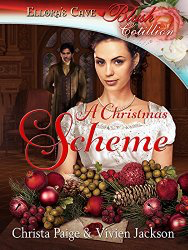
Here is my Amazon Author Page
Here is a link to my website: www.christapaige.com
Follow me on twitter: https://twitter.com/ChristaPaige

Regency Personalities Series-Lieutenant-General Sir Henry Clinton
Regency Personalities Series
In my attempts to provide us with the details of the Regency, today I continue with one of the��many period notables.
Lieutenant-General Sir Henry Clinton
9 March 1771 ��� 11 December 1829
Lieutenant-General Sir Henry Clinton came from a family of soldiers. His elder brother was General Sir William Henry Clinton (1769���1846), his father was General Sir Henry Clinton (1738���1795) the British Commander-in-Chief in North America during the American Revolutionary War and his grandfather was Admiral of the Fleet George Clinton (1686���1761).
Clinton received his officer’s commission in 1787. He went on to serve in the Flanders campaign as an aide-de-camp to the Prince Frederick, Duke of York and Albany starting in 1793. He was promoted to lieutenant colonel in 1795. Captured by the French, he was a prisoner in 1796���1797. During the 1799 campaign in northern Italy, he was a liaison officer with Alexander Suvarov’s Russian army. He went to India as adjutant general from 1802 to 1805.
At the Battle of Austerlitz in 1805, Clinton was the British military attach�� to the Russian army. He commanded the garrison of Syracuse in Sicily in 1806���1807. He became a Member of Parliament in 1808 and continued his political career for ten years
During the campaign and Battle of Corunna in 1808���1809, he served as Sir John Moore’s adjutant general. He was promoted to major-general in 1810.
During the remainder of the Peninsular War he commanded an infantry division under the Duke of Wellington. He was first appointed to command the 6th Division on 9 February 1812. During the Battle of Salamanca, his division played a key part by defeating French General Bertrand Clausel’s counterattack. He then led his division in the Siege of Burgos campaign. From 26 January to 25 June 1813, Clinton was absent and Edward Pakenham took over the 6th Division. For his conduct in the Vitoria campaign, Clinton was made a knight of the Order of the Bath.
He was absent again from 22 July to October, when he again assumed command of the 6th Division. He was given the local rank of lieutenant general in 1813. He took part in the subsequent victories at the battles of the Nivelle, the Nive, Orthez and Toulouse. At the end of the Peninsular War he was made a lieutenant general and inspector-general of infantry, and was awarded the Army Gold Cross with one clasp.
In 1815 during the Battle of Waterloo, Clinton led the 2nd Division which Wellington posted in reserve behind his right flank. The 2nd Division included the 3rd British Brigade (Maj-Gen Frederick Adam), the 1st King’s German Legion (KGL) Brigade (Col Du Plat), the 3rd Hanoverian Brigade (Col Hugh Halkett) and Lieut-Col Gold’s two artillery batteries (Bolton RA and Sympher KGL). His troops helped to defeat and pursue Napoleon’s Imperial Guard at the end of the battle.
He died on 11 December 1829.
And Coming on April 1st, 2015
Beaux Ballrooms and Battles anthology, celebrating the 200th anniversary of the victory at Waterloo in story.
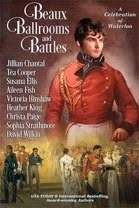
Looks good, huh? The talented writer and digital artist, Aileen Fish created this.
It will be available digitally for $.99 and then after a short period of time sell for the regular price of $4.99
The Trade Paperback version will sell for $12.99

My story in the anthology is entitled: Not a Close Run Thing at All, which of course is a play on the famous misquote attributed to Arthur Wellesley, ���a damn close-run thing��� which really was ���It has been a damned nice thing ��� the nearest run thing you ever saw in your life.���
Samantha, Lady Worcester had thought love was over for her, much like the war should have been. The Bastille had fallen shortly after she had been born. Her entire life the French and their Revolution had affected her and all whom she knew. Even to having determined who she married, though her husband now had been dead and buried these eight years.
Yet now Robert Barnes, a major-general in command of one of Wellington���s brigades, had appeared before her, years since he had been forgotten and dismissed. The man she had once loved, but because he had only been a captain with no fortune, her father had shown him the door.
With a battle at hand, she could not let down the defenses that surrounded her heart. Could she?
As her father���s hostess, she had travelled with him to Brussels where he served with the British delegation. Duty had taken her that night to the Duchess of Richmond���s ball. The last man she ever expected to see was Robert, who as a young captain of few prospects, had offered for her, only to be turned out by her father so that she could make an alliance with a much older, and better positioned (wealthy), aristocrat.Now, their forces were sure to engage Napoleon and the resurgent Grande Arm��e. Meeting Robert again just before he was to be pulled into such a horrific maelstrom surely was Fate���s cruelest trick ever. A fate her heart could not possibly withstand.

RAP has The End of the World
The End of the World This is the first of the Regency Romances I published. It is available for sale and I hope that you will take the opportunity to order your copy.
For yourself or as a gift. It is now available in a variety of formats. And now at the reduced price of $3.99 you can get this Regency Romance for your eReader. A little more as an actual physical book.
Barnes and Noble for your Nook
Amazon for your Kindle and as a Trade Paperback
Hermione Merwyn leads a pleasant, quiet life with her father, in the farthest corner of England. All is as it should be, though change is sure to come.�� For she and her sister have reached the age of marriage, but that can be no great adventure when life at home has already been so bountiful.
When Samuel Lynchhammer arrives in Cornwall, having journeyed the width of the country, he is down to his last few quid and needs to find work for his keep. Spurned by the most successful mine owner in the county, Gavin Tadcaster, Samuel finds work for Gavin���s adversary, Sir Lawrence Merwyn.
Can working for Sir Lawrence, the father of two young women on the cusp of their first season to far away London, be what Samuel needs to help him resolve the reasons for his running away from his obligations in the east of the country?
Will the daughters be able to find happiness in the desolate landscapes and deadly mines of their home? When a stranger arrives in Cornwall while the war rages on the Peninsula, is he the answer to one���s prayers, or a nightmare wearing the disguise of a gentleman?
Feedback
If you have any commentary, thoughts, ideas about the book (especially if you buy it, read it and like it ;-) then we would love to hear from you.

March 29, 2015
Regency Personalities Series-General Sir Colin Halkett
Regency Personalities Series
In my attempts to provide us with the details of the Regency, today I continue with one of the��many period notables.
General Sir Colin Halkett
1774���1856
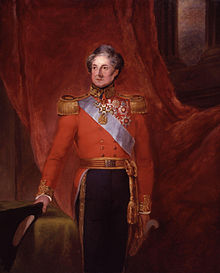
Colin Halkett
General Sir Colin Halkett came from a military family. His father was Major General Frederick Godar Halkett and his younger brother was General Hugh Halkett.
Halkett began his military career in the Dutch Guards and served in various companies for three years, leaving as a captain in 1795.
From 1800 to 1801 he commanded Dutch troops on the Island of Guernsey. On 28 July 1803, a letter of service was issued to Major Halkett (and to Lieutenant Colonel von der Decken) empowering him “to raise a battalion of infantry with an establishment of four hundred and fifty-nine men” and offering him the rank of lieutenant colonel should he increase the number to eight hundred men. These men formed the nucleus of what was to become the King’s German Legion in December 1803. On 17 November 1803, Halkett was promoted to Lieutenant Colonel and given command of the 2nd Light Infantry Battalion. This Battalion was involved in Cathcart’s expeditions to Hanover, R��gen and Copenhagen.
In 1811 he was given command of the Light Brigade of the King’s German Legion. He held this command throughout the Peninsular War from Albuera to Toulouse. On 1 January 1812 he was promoted to Colonel. At the Battle of Salamanca (22 July 1812), he commanded 1st Brigade of the 7th Division under Major General Hope.
Halkett was promoted to Major General on 4 June 1814.
On 18 June 1815, at the Battle of Waterloo he commanded the 5th Brigade in the 3rd Division, under the command of Major General Carl von Alten. He was wounded four times during the course of the battle.
Halkett became Lieutenant Governor of Jersey in 1821 and was the first Lieutenant Governor to reside in the St Saviour Government House, still in use today. During this time he married Letitia Cricket, widow of Captain Tyle of the Royal Artillery. He had a son, Frederick (John) Colin Halkett, on 10 June 1826. He was promoted to Lieutenant General on 22 July 1830 and appointed Commander-in-Chief of the Bombay Army in January 1832. He was Governor of the Royal Hospital Chelsea from 1849 until his death in 1856.
He was appointed colonel of the 71st Regiment of Foot on 21 September 1829. On 28 March 1838 he was removed to the 31st Regiment of Foot, and to the 45th Regiment of Foot on 12 July 1847.
And Coming on April 1st, 2015
Beaux Ballrooms and Battles anthology, celebrating the 200th anniversary of the victory at Waterloo in story.
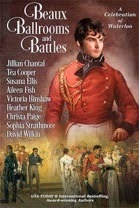
Looks good, huh? The talented writer and digital artist, Aileen Fish created this.
It will be available digitally for $.99 and then after a short period of time sell for the regular price of $4.99
The Trade Paperback version will sell for $12.99

My story in the anthology is entitled: Not a Close Run Thing at All, which of course is a play on the famous misquote attributed to Arthur Wellesley, ���a damn close-run thing��� which really was ���It has been a damned nice thing ��� the nearest run thing you ever saw in your life.���
Samantha, Lady Worcester had thought love was over for her, much like the war should have been. The Bastille had fallen shortly after she had been born. Her entire life the French and their Revolution had affected her and all whom she knew. Even to having determined who she married, though her husband now had been dead and buried these eight years.
Yet now Robert Barnes, a major-general in command of one of Wellington���s brigades, had appeared before her, years since he had been forgotten and dismissed. The man she had once loved, but because he had only been a captain with no fortune, her father had shown him the door.
With a battle at hand, she could not let down the defenses that surrounded her heart. Could she?
As her father���s hostess, she had travelled with him to Brussels where he served with the British delegation. Duty had taken her that night to the Duchess of Richmond���s ball. The last man she ever expected to see was Robert, who as a young captain of few prospects, had offered for her, only to be turned out by her father so that she could make an alliance with a much older, and better positioned (wealthy), aristocrat.Now, their forces were sure to engage Napoleon and the resurgent Grande Arm��e. Meeting Robert again just before he was to be pulled into such a horrific maelstrom surely was Fate���s cruelest trick ever. A fate her heart could not possibly withstand.

Space Opera Books Presents Trolling, Trolling, Trolling Fly Hides
Trolling, Trolling, Trolling Fly Hides!
Not only do I write Regency and Romance, but I also have delved into Fantasy.
The Trolling series, (the first three are in print) is the story of a man, Humphrey. We meet him as he has left youth and become a man with a man���s responsibilities.
We follow him in a series of stories that encompass the stages of life. We see him when he starts his family, when he has older sons and the father son dynamic is tested.
We see him when his children begin to marry and have children, and at the end of his life when those he has loved, and those who were his friends proceed him over the threshold into death. All this while he serves a kingdom troubled by monsters.
Troubles that he and his friends will learn to deal with and rectify.
It is now available in a variety of formats. For $2.99 you can get this fantasy adventure.
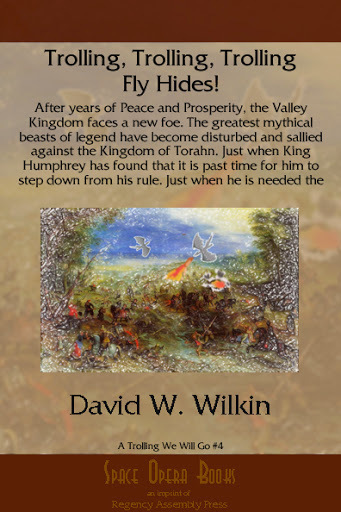
Barnes and Noble for your Nook
Old age is catching up to Humphrey and his friends. He feels it in his bones and with his son and heir having reached the prime of his life, it could very well be time to pass the baton of rule to Daniel.With the Valley Kingdom of Torahn at Peace, that would not be a terrible thing to do. Though breaking his decision to his wife Gwendolyn, the Queen, might be the hardest battle that he ever would fight.
Even as the life of retirement looks to be attractive and possible, however, the Valley Kingdom is beset again. Not Goblins, Trolls, Giants or Men, this time. No. That Humphrey knew would be far too easy.
Those obstacles had been overcome before and the problems they presented had solutions that the army of Torahn was trained to deal with. No, of all the creatures that came forth from Teantellen that they had beaten, the one they had never faced now came forth. Dragons!
Who in the realm knew how to fight these mythical beasts? Was there even away to do so?
Now Humphrey who had thought to spend the remainder of his days quietly writing his memoirs and drinking, was faced with the greatest challenge he had ever known.
Feedback
If you have any commentary, thoughts, ideas about the book (especially if you buy it, read it and like it ;-) then we would love to hear from you.

March 28, 2015
Regency Personalities Series-Charlotte Lennox Duchess of Richmond
Regency Personalities Series
In my attempts to provide us with the details of the Regency, today I continue with one of the��many period notables.
Charlotte Lennox Duchess of Richmond
20 September 1768 ��� 5 May 1842

Charlotte Lennox
Charlotte Lennox Duchess of Richmond was born at Gordon Castle, Lady Charlotte Gordon was the eldest child of Alexander Gordon, 4th Duke of Gordon, and his wife Jane (n��e Maxwell). On 9 September 1789, she married Charles Lennox, 4th Duke of Richmond, 4th Duke of Lennox and 4th Duke of Aubigny.
In 1814, the family moved to Brussels, where the Duchess gave the ball at which the Duke of Wellington received confirmation that the Army of the North under the command of Napoleon Bonaparte had entered the territory of the United Kingdom of the Netherlands near Charleroi (in what is today Belgium). The Duchess and her family continued to live in Brussels until 1818, when her husband was appointed Governor General of British North America. The Duchess was widowed in 1819, and in 1836, she inherited the vast Gordon estates on the death of her brother, George Gordon, 5th Duke of Gordon, who had left no legitimate children. She died at the age of 73 in London on 5 May 1842.
The Duke and Duchess had seven sons and seven daughters:
Charles Gordon-Lennox, 5th Duke of Richmond (1791���1860).
Lady Mary Lennox (c. 1792 ��� 7 December 1847), married Sir Charles Fitzroy and had issue.
Lieutenant-Colonel Lord John George Lennox (3 October 1793 ��� 10 November 1873), married Louisa Rodney and had issue.
Lady Sarah Lennox (c. 1794 ��� 8 September 1873), married Peregrine Maitland.
Lady Georgiana Lennox (30 September 1795 ��� 15 December 1891), married William FitzGerald-de Ros, 23rd Baron de Ros, and had issue.
Lord Henry Adam Lennox (6 September 1797 ��� 1812), fell overboard from HMS Blake and drowned.
Lord William Pitt Lennox (20 September 1799 ��� 18 February 1881), married first Mary Ann Paton and second Ellen Smith; had issue by the latter.
Lady Jane Lennox (c. 1800 ��� 27 March 1861), married Laurence Peel and had issue.
Captain Lord Frederick Lennox (24 January 1801 ��� 25 October 1829).
Lord Sussex Lennox (11 June 1802 ��� 12 April 1874), married Hon. Mary Lawless and had issue.
Lady Louisa Maddelena Lennox (2 October 1803 ��� 2 March 1900), married Rt. Hon. William Tighe, died without issue.
Lady Charlotte Lennox (c. 1804 ��� 20 August 1833), married Maurice Berkeley, 1st Baron FitzHardinge of Bristol, and had issue.
Lieutenant-Colonel Lord Arthur Lennox (2 October 1806 ��� 15 January 1864), married Adelaide Campbell and had issue.
Lady Sophia Georgiana Lennox (21 July 1809 ��� 17 January 1902), married Lord Thomas Cecil, died without issue.
And Coming on April 1st, 2015
Beaux Ballrooms and Battles anthology, celebrating the 200th anniversary of the victory at Waterloo in story.
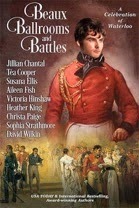
Looks good, huh? The talented writer and digital artist, Aileen Fish created this.
It will be available digitally for $.99 and then after a short period of time sell for the regular price of $4.99
The Trade Paperback version will sell for $12.99

My story in the anthology is entitled: Not a Close Run Thing at All, which of course is a play on the famous misquote attributed to Arthur Wellesley, ���a damn close-run thing��� which really was ���It has been a damned nice thing ��� the nearest run thing you ever saw in your life.���
Samantha, Lady Worcester had thought love was over for her, much like the war should have been. The Bastille had fallen shortly after she had been born. Her entire life the French and their Revolution had affected her and all whom she knew. Even to having determined who she married, though her husband now had been dead and buried these eight years.
Yet now Robert Barnes, a major-general in command of one of Wellington���s brigades, had appeared before her, years since he had been forgotten and dismissed. The man she had once loved, but because he had only been a captain with no fortune, her father had shown him the door.
With a battle at hand, she could not let down the defenses that surrounded her heart. Could she?
As her father���s hostess, she had travelled with him to Brussels where he served with the British delegation. Duty had taken her that night to the Duchess of Richmond���s ball. The last man she ever expected to see was Robert, who as a young captain of few prospects, had offered for her, only to be turned out by her father so that she could make an alliance with a much older, and better positioned (wealthy), aristocrat.Now, their forces were sure to engage Napoleon and the resurgent Grande Arm��e. Meeting Robert again just before he was to be pulled into such a horrific maelstrom surely was Fate���s cruelest trick ever. A fate her heart could not possibly withstand.

An Unofficial Guide to how to win the Scenarios of Wild the 2nd Expansion for Rollercoaster Tycoon 3
An Unofficial Guide to how to win the Scenarios of Wild
I have been a fan of this series of computer games since early in its release of the very first game. That game was done by one programmer, Chris Sawyer, and it was the first I recall of an internet hit. Websites were put up in dedication to this game where people showed off their creations, based on real amusement parks. These sites were funded by individuals, an expense that was not necessarily as cheap then as it is now. Nor as easy to program then as it might be to build a web page now.
Prima Books released game guides for each iteration of the game, Rollercoaster Tycoon 1, Rollercoaster Tycoon 2 and Rollercoaster Tycoon 3 (RCT3) but not for the expansion sets. And unlike the first two works, the third guide was riddle with incorrect solutions. As I played the game that frustrated me. And I took to the forums that Atari, the game publisher hosted to see if I could find a way to solve those scenarios that the Prima Guide had written up in error. Not finding any good advice, I created my own for the scenarios that the ���Official��� Guide had gotten wrong.
Solutions that if you followed my advice you would win the scenario and move on. But if you followed the ���Official��� version you would fail and not be able to complete the game. My style and format being different than the folks at Prima, I continued for all the Scenarios that they had gotten right as well, though my solutions cut to the chase and got you to the winner���s circle more quickly, more directly.
My contributions to the ���Official��� Forum, got me a place as a playtester for both expansions to the game, Soaked and Wild. And for each of these games, I wrote the guides during the play testing phase so all the play testers could solve the scenarios, and then once again after the official release to make changes in the formula in case our aiding to perfect the game had changed matters. For this, Atari and Frontier (the actual programmers of the game) placed me within the game itself.
And for the longest time, these have been free at the ���Official��� Forums, as well as my own website dedicated to the game. But a short time ago, I noticed that Atari, after one of its bankruptcies had deleted their forums. So now I am releasing the Guide for one and all. I have added new material and it is near 100 pages, just for the first of the three games. It is available for the Kindle at present for $2.99.
(Click on the picture to purchase)
Not only are all 12 Scenarios covered, but there are sections covering every Cheat Code, Custom Scenery, the famous Small Park Competition, the Advanced Fireworks Editor, the Flying Camera Route Editor which are all the techniques every amusement park designer needs to make a fantastic park in Rollercoaster Tycoon 3.
Scenarios for WILD!
1) Scrub Gardens
2) Ostrich Farms Plains
3) Egyptian Sand Dance
4) A Rollercoaster Odyssey
5) Zoo Rescue
6) Mine Mountain
7) Insect World
8) Rocky Coasters
9) Lost Land of the Dinosaurs
10) Tiger Forest
11) Raiders of the Lost Coaster
12) Saxon Farms

March 27, 2015
Regency Personalities Series-Field Marshall John Colborne 1st Baron Seaton
Regency Personalities Series
In my attempts to provide us with the details of the Regency, today I continue with one of the��many period notables.
Field Marshall John Colborne 1st Baron Seaton
16 February 1778 ��� 17 April 1863
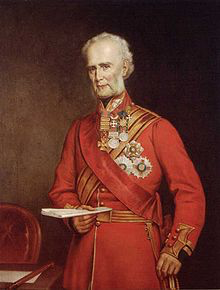
John Colborne
Field Marshall John Colborne 1st Baron Seaton was a British Army officer and Colonial Governor. After taking part as a junior officer in the Anglo-Russian invasion of Holland, Sir Ralph Abercromby’s expedition to Egypt and then the War of the Third Coalition, he served as military secretary to Sir John Moore at the Battle of Corunna. He then commanded the 2nd Battalion of the 66th Regiment of Foot and, later, the 52nd Regiment of Foot at many of the battles of the Peninsular War. At the Battle of Waterloo, Colborne on his own initiative brought the 52nd Regiment of Foot forward, took up a flanking position in relation to the French Imperial Guard and then, after firing repeated volleys into their flank, charged at the Guard so driving them back in disorder. He went on to become commander-in-chief of all the armed forces in British North America, personally leading the offensive at the Battle of Saint-Eustache in Lower Canada and defeating the rebel force in December 1837. After that he was high commissioner of the Ionian Islands and then Commander-in-Chief, Ireland.
Born the only son of Samuel Colborne and Cordelia Anne Colborne (n��e Garstin), Colborne was educated at Christ’s Hospital in London and at Winchester College. He was commissioned as an ensign in the 20th Regiment of Foot on 10 July 1794 securing all subsequent steps in his regimental promotion without purchase. Promoted to lieutenant on 4 September 1795 and to captain lieutenant on 11 August 1799, he saw action at the Battle of Alkmaar in October 1799, where he was wounded, during the Anglo-Russian invasion of Holland. Promoted to brevet captain on 12 January 1800, he took part in Sir Ralph Abercromby’s expedition to Egypt in August 1801 and was wounded again.
Colborne was deployed with his regiment to Italy where he distinguished himself at the Battle of Maida in July 1806 during the War of the Third Coalition. He became military secretary to General Henry Fox in 1806 and then became military secretary to Sir John Moore with the rank of major on 21 January 1808. In this capacity he accompanied Moore to Sweden in May 1808 and to Portugal in 1808 and served with him at the Battle of Benavente in December 1808 and Battle of Corunna in January 1809. It was Moore’s dying request that Colborne should be given a lieutenant colonelcy and this was complied with on 2 February 1809. He transferred to the 66th Regiment of Foot on 2 November 1809, and after returning to Spain with Sir Arthur Wellesley’s Army, he witnessed the defeat of the Spaniards at the Battle of Oca��a later that month. He commanded a brigade at the Battle of Bussaco in September 1810 and then commanded the 2nd Battalion of the 66th Regiment of Foot at the Battle of Albuera in May 1811 where his brigade was virtually anihillated by Polish 1st Vistulan Lancers Regiment of French Army. After transferring to the command of the 52nd Regiment of Foot he took part in the Siege of Ciudad Rodrigo in January 1812 where he was badly injured and had to be invalided back to England.
After recovering in England, Colborne returned to Spain and commanded the 52nd Regiment of Foot at the Siege of San Sebasti��n in August 1813 before taking temporary charge of the 2nd brigade of the Light Division in late 1813 and commanding it at the Battle of the Bidassoa in October 1813, at the Battle of Nivelle in November 1813 and at the Battle of the Nive in December 1813. He returned to the 52nd Regiment of Foot and commanded it at the Battle of Orthez in February 1814 and at the Battle of Toulouse in April 1814 and at the Battle of Bayonne also in April 1814. He was appointed a Knight Commander of the Order of the Bath on 4 January 1815.
Colborne became aide-de-camp to the Prince Regent with the rank of colonel on 4 June 1814, and, following Napoleon’s escape from Elba, he managed to dissuade the Prince from attacking the French Army until the Duke of Wellington arrived. At the Battle of Waterloo in June 1815 during the Hundred Days, Colborne on his own initiative brought the 52nd Regiment of Foot forward, took up a flanking position in relation to the French Imperial Guard and then, after firing repeated volleys into their flank, charged at the Guard so driving them back in disorder. He was appointed a Knight of the Austrian Military Order of Maria Theresa on 2 August 1815. After the War he remained with his regiment as part of the Army of Occupation.
Colborne became Lieutenant Governor of Guernsey in July 1821 and, having been promoted to major-general on 27 May 1825, became Lieutenant Governor of Upper Canada in August 1828. As Lieutenant Governor, Colborne increased the population of the province by 70% by initiating an organised system of immigration to bring in settlers from Britain. He also aided settlement by expanding the communication and transportation infrastructure through a campaign to build roads and bridges. He brought changes to the structure of the legislative council, increased fiscal autonomy and encouraged greater independence in the judiciary. In 1829 he founded Upper Canada College as a school based on the Elizabeth College, Guernsey model to educate boys in preparation for becoming leaders of the colonies.
In January 1836 Colborne became commander-in-chief of all the armed forces in British North America. He was promoted to the local rank of lieutenant general on 8 July 1836. During Colborne’s period of office as commander-in-chief, the Family Compact promoted resistance to the political principle of responsible government. At the end of its lifespan, the Compact would be condemned by Lord Durham as “a petty corrupt insolent Tory clique”. This resistance, together with conflicts between the assembly and the executive over fiscal matters as well as a difficult economic situation, led to the Rebellions of 1837. Colborne personally led the offensive at the Battle of Saint-Eustache in December 1837 defeating the rebel force which had become holed up in a church.
Colborne was advanced to Knight Grand Cross of the Order of the Bath on 29 January 1838 and, following Lord Gosford’s resignation in February 1838, he received additional powers as acting Governor General of British North America. Promoted to the substantive rank of lieutenant-general on 28 June 1838, he put down a second revolt in October 1838 and was confirmed as Governor General of British North America on 14 December 1838. He left Canada in October 1839 and, after arriving back in England, was raised to the peerage as Baron Seaton of Seaton in Devonshire on 5 December 1839.
Colborne became high commissioner of the Ionian Islands in February 1843, and having been promoted to full general on 20 June 1854, he became Commander-in-Chief, Ireland in 1855. After standing down from active service in Spring 1860, he was promoted to field marshal on 1 April 1860 and retired to his home at Beechwood House in Sparkwell.
Colborne also served as honorary colonel of the 94th Regiment of Foot, as honorary colonel of the 26th (Cameronian) Regiment of Foot and then as honorary colonel of the 2nd Regiment of Life Guards. He was also colonel-in-chief of the Rifle Brigade (Prince Consort’s Own). He died at Valletta House in Torquay on 17 April 1863 and was buried in the churchyard of Holy Cross Church at Newton Ferrers.
In November 1866 a bronze statue of Colborne sculpted by George Adams and financed by public donations was erected at Mount Wise at Devonport: it was moved to Seaton Barracks in Crownhill in the early 1960s and then to Peninsula Barracks in Winchester in the 1990s. A second statue of Colborne also sculpted by George Adams was erected at Upper Canada College.
In 1813 Colborne married Elizabeth Yonge; they had three daughters and five sons.
And Coming on April 1st, 2015
Beaux Ballrooms and Battles anthology, celebrating the 200th anniversary of the victory at Waterloo in story.
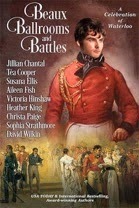
Looks good, huh? The talented writer and digital artist, Aileen Fish created this.
It will be available digitally for $.99 and then after a short period of time sell for the regular price of $4.99
The Trade Paperback version will sell for $12.99

My story in the anthology is entitled: Not a Close Run Thing at All, which of course is a play on the famous misquote attributed to Arthur Wellesley, ���a damn close-run thing��� which really was ���It has been a damned nice thing ��� the nearest run thing you ever saw in your life.���
Samantha, Lady Worcester had thought love was over for her, much like the war should have been. The Bastille had fallen shortly after she had been born. Her entire life the French and their Revolution had affected her and all whom she knew. Even to having determined who she married, though her husband now had been dead and buried these eight years.
Yet now Robert Barnes, a major-general in command of one of Wellington���s brigades, had appeared before her, years since he had been forgotten and dismissed. The man she had once loved, but because he had only been a captain with no fortune, her father had shown him the door.
With a battle at hand, she could not let down the defenses that surrounded her heart. Could she?
As her father���s hostess, she had travelled with him to Brussels where he served with the British delegation. Duty had taken her that night to the Duchess of Richmond���s ball. The last man she ever expected to see was Robert, who as a young captain of few prospects, had offered for her, only to be turned out by her father so that she could make an alliance with a much older, and better positioned (wealthy), aristocrat.Now, their forces were sure to engage Napoleon and the resurgent Grande Arm��e. Meeting Robert again just before he was to be pulled into such a horrific maelstrom surely was Fate���s cruelest trick ever. A fate her heart could not possibly withstand.

Fantasy from Space Opera Books, Trolling’s Pass and Present
Trolling���s Pass and Present
Not only do I write Regency and Romance, but I also have delved into Fantasy. The Trolling series, (the first three are in print) is the story of a man, Humphrey.
We meet him as he has left youth and become a man with a man���s responsibilities. We follow him in a series of stories that encompass the stages of life.
We see him when he starts his family, when he has older sons and the father son dynamic is tested. We see him when his children begin to marry and have children, and at the end of his life when those he has loved, and those who were his friends proceed him over the threshold into death.
All this while he serves a kingdom troubled by monsters. Troubles that he and his friends will learn to deal with and rectify.
It is now available in a variety of formats. For $2.99 you can get this fantasy adventure.
Barnes and Noble for your Nook
Years since their battles with the Trolls, even on foreign soil, the warriors of the Valley Kingdom of Torahn need something to keep their edge honed.
The economy too is beginning to fray a little without the great wars to support. The Leaders hit upon the idea of searching for a path to reach the east side of the continent.
The Elves swear that at one time their writings tell of such, the Dwarves swear such a pass across Teantellen is legendary. Teantellen though is filled with races man has never gotten along with well. Goblins, Dark Elves, Trolls, Giants and Dragons.
It has been years since the mountain tops exploded, and perhaps that has changed things enough that a way can be found to link the western lands with the eastern lands and increase trade, and prosperity for all. Even should they fail in their quest, as the history of man has shown to this point in time, the attempt will do much to spur the economy.
Tens of thousands of gold will be spent by the Council of Twenty-One to pay for such an expedition. Gold that those who are not so scrupulous might choose to pocket as they tried in the Troll Wars.
With such shenanigans taking place again, are the hopes of the previous generation, the leaders from the Troll Wars now in retirement, ready to be achieved? Is it time for Torahn, called the Valley Kingdom, but the only Kingdom without a King, to have a King once more?
Feedback
If you have any commentary, thoughts, ideas about the book (especially if you buy it, read it and like it ;-) then we would love to hear from you.

March 26, 2015
Regency Personalities Series-Sir John Ormsby Vandeleur
Regency Personalities Series
In my attempts to provide us with the details of the Regency, today I continue with one of the��many period notables.
Sir John Ormsby Vandeleur
1763 ��� 1 November 1849
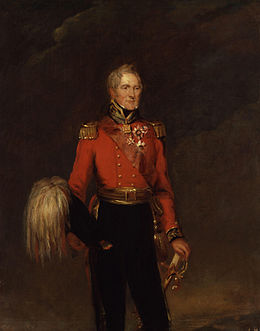
John Ormsby Vandeleur
Sir John Ormsby Vandeleur commanded a brigade of British cavalry at the Battle of Waterloo.
His career in the British army began in 1781 as an ensign in an infantry regiment. He exchanged into a cavalry regiment in 1792 and served in the War of the First Coalition. In 1802 he went to India and fought in the Second Anglo-Maratha War as an acting cavalry brigadier.
He returned from India in 1806 and was promoted to major general in 1811 in Portugal. He led an infantry brigade in the famous Light Division at Ciudad Rodrigo, Salamanca, San Millan, and Vitoria. Vandeleur commanded a cavalry brigade at the Nive in 1813 and was knighted in early 1815. After Waterloo he was colonel-in-chief of two cavalry regiments in succession and he was promoted to full General in 1838.
Vandeleur’s parents were Richard Vandeleur (died 1772) and Elinor Firman.
He had two sisters, Elizabeth who married into the Moore family and Ellen who married William Armstrong.
His father Richard’s parents were John Vandeleur (died 1754) and Frances Ormsby. His father Richard’s siblings were Crofton (died 1795), John Ormsby (died 1777), and Mary (died 1790).
A number of cousins served in the British army and three paid the supreme price. Thomas Pakenham Vandeleur, son of his uncle John Ormsby Vandeleur, was killed at Laswari in 1803.
Two of his uncle Crofton’s sons died during the Peninsular War. Richard died at Campo Maior, Portugal while serving with the 88th Foot and Frederick was killed in action at Vitoria in 1813 with the 87th Foot.
Vandeleur married a daughter of the Rev. John Glesse in 1829 and the couple had two children, a son and a daughter Ellen who married Colonel Richard Greaves
And Coming on April 1st, 2015
Beaux Ballrooms and Battles anthology, celebrating the 200th anniversary of the victory at Waterloo in story.
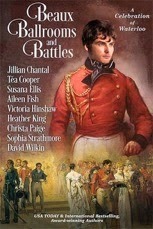
Looks good, huh? The talented writer and digital artist, Aileen Fish created this.
It will be available digitally for $.99 and then after a short period of time sell for the regular price of $4.99
The Trade Paperback version will sell for $12.99

My story in the anthology is entitled: Not a Close Run Thing at All, which of course is a play on the famous misquote attributed to Arthur Wellesley, ���a damn close-run thing��� which really was ���It has been a damned nice thing ��� the nearest run thing you ever saw in your life.���
Samantha, Lady Worcester had thought love was over for her, much like the war should have been. The Bastille had fallen shortly after she had been born. Her entire life the French and their Revolution had affected her and all whom she knew. Even to having determined who she married, though her husband now had been dead and buried these eight years.
Yet now Robert Barnes, a major-general in command of one of Wellington���s brigades, had appeared before her, years since he had been forgotten and dismissed. The man she had once loved, but because he had only been a captain with no fortune, her father had shown him the door.
With a battle at hand, she could not let down the defenses that surrounded her heart. Could she?
As her father���s hostess, she had travelled with him to Brussels where he served with the British delegation. Duty had taken her that night to the Duchess of Richmond���s ball. The last man she ever expected to see was Robert, who as a young captain of few prospects, had offered for her, only to be turned out by her father so that she could make an alliance with a much older, and better positioned (wealthy), aristocrat.Now, their forces were sure to engage Napoleon and the resurgent Grande Arm��e. Meeting Robert again just before he was to be pulled into such a horrific maelstrom surely was Fate���s cruelest trick ever. A fate her heart could not possibly withstand.


